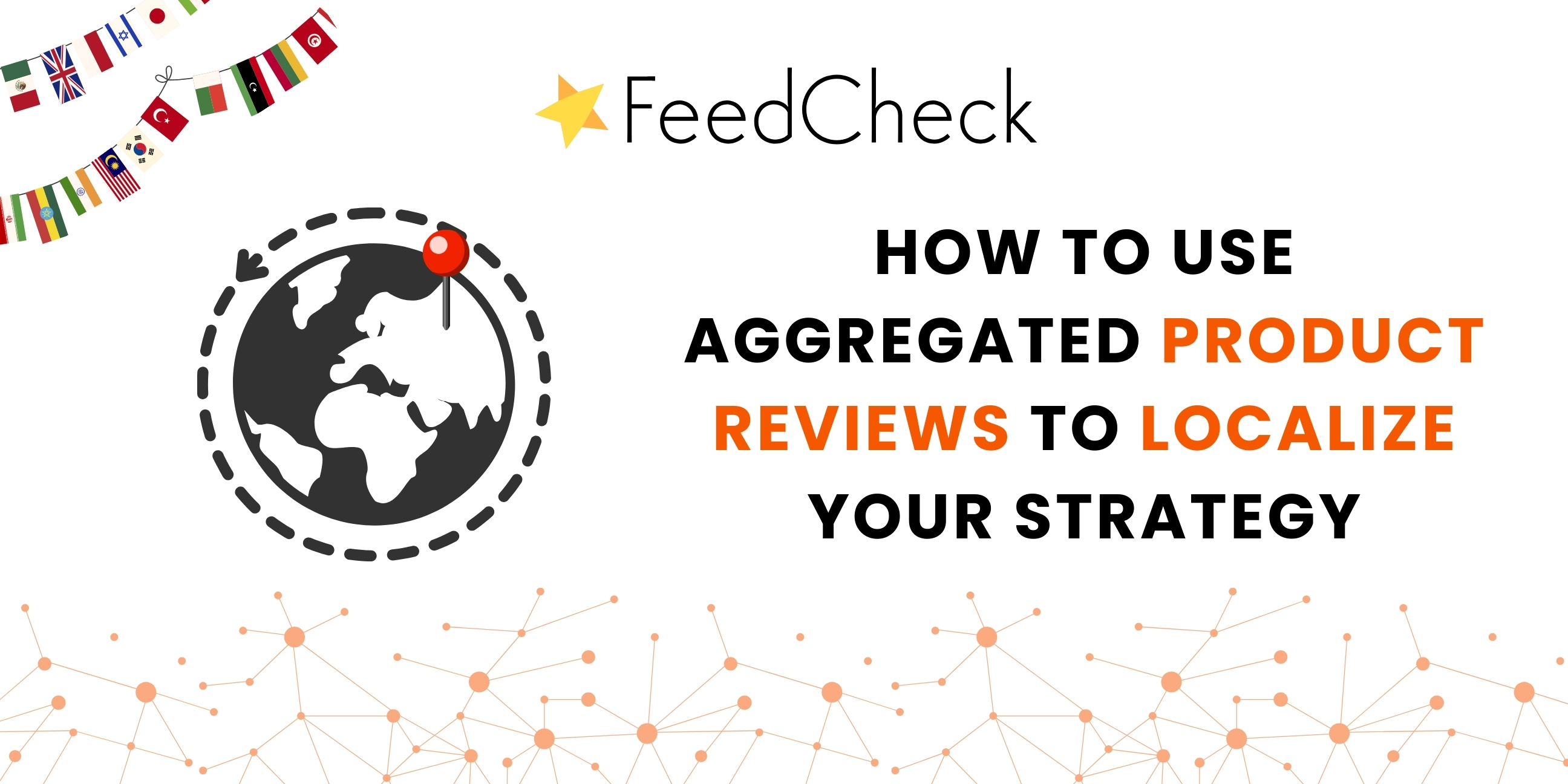Let’s face it – running a successful brand in today’s global marketplace is not easy. As marketplaces expand, so do the challenges. Customers from different regions want different things, and their feedback can reveal insights you would have never guessed otherwise. That’s where the value of aggregated reviews comes in.
By gathering feedback from multiple sources into a single place, review analytics give you the ultimate bird’s eye of how your product is performing across various markets. Instead of just focusing on one-off complaints, you get a big-picture understanding of what’s working and what’s not.
Catering to diverse regional audiences requires more than just great products – it demands sharp localization strategies. Aggregated product reviews help you tackle this by highlighting region-specific preferences and cultural nuances.
What are aggregated product reviews?
Aggregated product reviews are like a treasure chest of customer insights.
Essentially, review aggregation is a process of collecting, compiling, and analyzing feedback from multiple platforms – think Amazon, Walmart, Target, BestBuy, but also Google Reviews, Yelp, TripAdvisor, and more. Instead of jumping from one website to another to check reviews, brands can see everything in one place, thanks to tools like customer review managers.
So, how is collected feedback better than individual reviews? You can think of reviews as puzzle pieces. On their own, they give you a fragment of the bigger picture. But when you take a step back and have a better look, you start putting pieces together. That’s when you uncover patterns, trends, and insights you’d never see from one single review.
This is where the power lies: aggregated product reviews provide a more comprehensive look at the customer journey. This can give you insights ranging from their initial impression to delivery to post-purchase opinions and long-term satisfaction.

Why are aggregated reviews important for localization?
Aggregated reviews are your secret weapon to understanding how your brand resonates in different regions. When expanding into new markets, simply reusing strategies won’t work properly.
Understanding the customer experience and pairing that with cultural nuances can highlight region-specific preferences. You can find out how your products are doing in different parts of the world and if there’s ways you can localize your offerings to better fit the target audience.
Besides product improvements, product reviews reveal how your messaging lands in different cultures. Are your marketing campaigns striking the right chord, or do they feel out of touch? Analyzing customer reviews helps you “hear” your customers, so to speak, because today’s customers seek connection, authenticity, and a sense of belonging. They want to feel valued and heard, not just as customers, but as part of a community.
And, of course, don’t forget about competitors. You may be aware of global competition, but there’s a high chance you’re overlooking regional brands. And who knows how well they’re doing and what kind of connection they have to your potential customers? Monitoring reviews of competitor brands can help you identify strengths to match and weaknesses to capitalize on.
Tools like FeedCheck make it easy to turn these insights into action. With its review monitoring and online brand reputation service, you can quickly spot trends and start tailoring your strategy for each region. Localization becomes less about guessing, and more about listening.
How to use aggregated feedback for regional strategy
Now that you know why aggregated feedback is a goldmine, here’s how you can use it to localize your strategy effectively and align with customer expectations everywhere:
- Collect reviews from multiple platforms. Customers share their opinions across various ecommerce sites, social platforms, and review websites. Cast a wide net and gather feedback from multiple sources, ensuring you’re getting a well-rounded view of customer sentiment and not missing critical insights.
- Analyze common themes by region. Use an online review aggregator to group feedback by location. Look for patterns in customer preferences, frequently mentioned pain points, and unmet needs that may vary across locations.
- Adapt product features based on feedback. If customers in one area consistently mention something they wished were different for your product, consider rolling it out regionally first. Listening and responding to customer needs builds trust and positions your brand as responsive and customer-centric, increasing brand loyalty.
- Localize marketing campaigns. 86% of localized advertising campaigns yield higher click-through and conversation rates than English-only ones. Customers from different cultures perceive value differently, so highlight the aspects of your product that matter most to each region, whether that’s visuals, language, or messaging.
- Measure success through ongoing review monitoring. Localization is an ongoing process. Once you’ve adopted changes, track their impact and see how they’re resonating with customers. Monitoring reviews over time helps you assess whether sentiment is improving, and how to continuously adapt your strategy to stay ahead.
Real-world example: Coca-Cola as a master in localization
No one has perfected localization strategies quite like Coca-Cola.
With over 100 years of experience in more than 200 countries, they’ve nailed the art of adapting to regional preferences. Their localization strategy – “think local, act local” – is reflected in everything they do.
Take India, for example. Coca-Cola launched local drinks like Vio Spiced Buttermilk and Minute Maid Nutriforce to cater to regional tastes. They even rolled out Bengali labels in areas where English isn’t widely spoken. In a similar fashion, in China, they embraced cultural nuances using Chinese characters on packaging and, once they learned about the unique ways of teen communication through different styles, Coke adapted their campaigns for that.
Take that for cultural appreciation! Coca-Cola doesn’t just translate marketing materials; they immerse themselves in their customers’ cultures to make sure they are hitting the right notes. Aggregated reviews can help your brand do the same by pinpointing regional preferences and needs, enabling you to create a strategy that truly connects.

Why product review monitoring is key to staying ahead
The impact of a good localization strategy is clear – a more connected community, increased brand loyalty and trust, and a much higher reach. Companies have seen a 47% increase in search traffic, a 70% rise in website visits, and a 20% increase rates.
Review monitoring services are the backbone of a successful localization strategy. Staying ahead in a competitive market requires constant listening and adaptation, and aggregating feedback makes that much easier. By regularly monitoring reviews, you’ll spot trends before they become problems and seize opportunities before your competitors do.
With tools like FeedCheck, the process becomes seamless. Our platform lets you monitor customer feedback, track changes in sentiment, and identify areas for improvement all in one place. Instead of navigating scattered feedback, you gain a clear view of your brand reputation, helping you refine your localization strategy and stay ahead of the competition.
Conclusion
Successful localization isn’t a one-size-fits-all strategy. You have to listen to your customers and adapt based on real-world insights. Aggregated product reviews provide the data-driven foundation needed to tailor products, messaging, and overall brand experience to different regions. By constantly analyzing feedback and making use of the insights from review monitoring tools, brands can strengthen their global presence and build stronger connections with regional audiences.
Start listening to your customers, adapt to their needs, and watch your brand thrive. Need help? FeedCheck’s review monitoring tool has got you covered. Contact us to see how we can bring value to your localization strategy.
